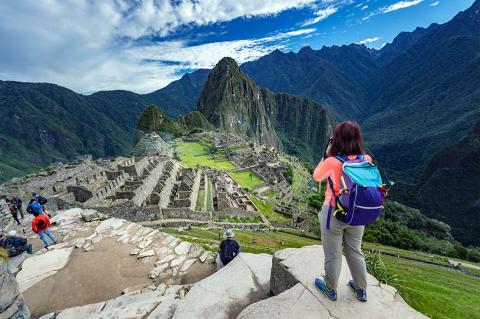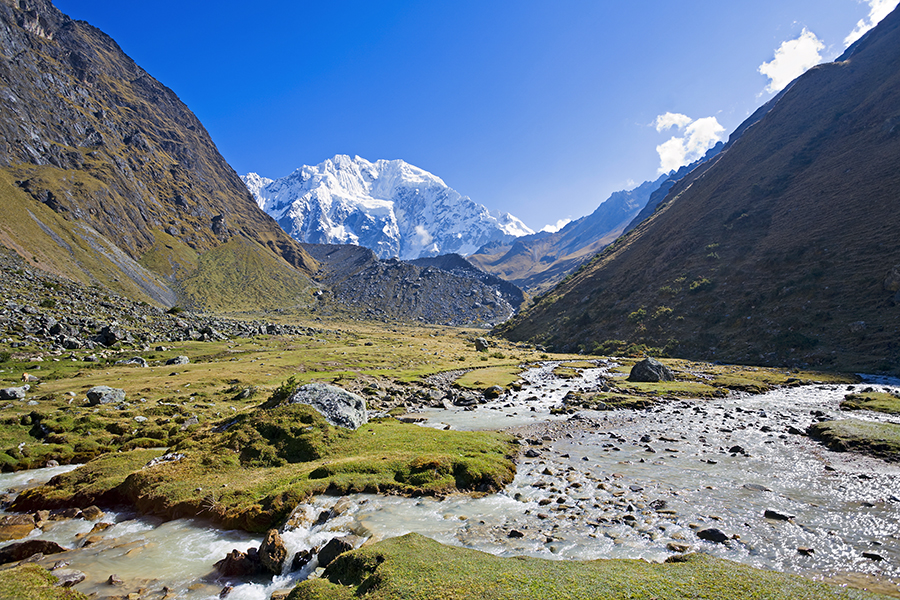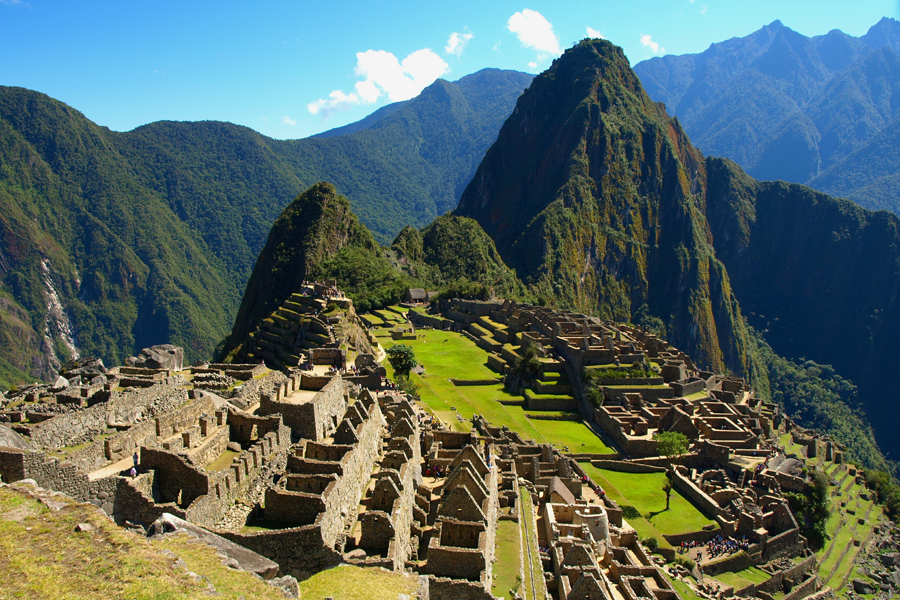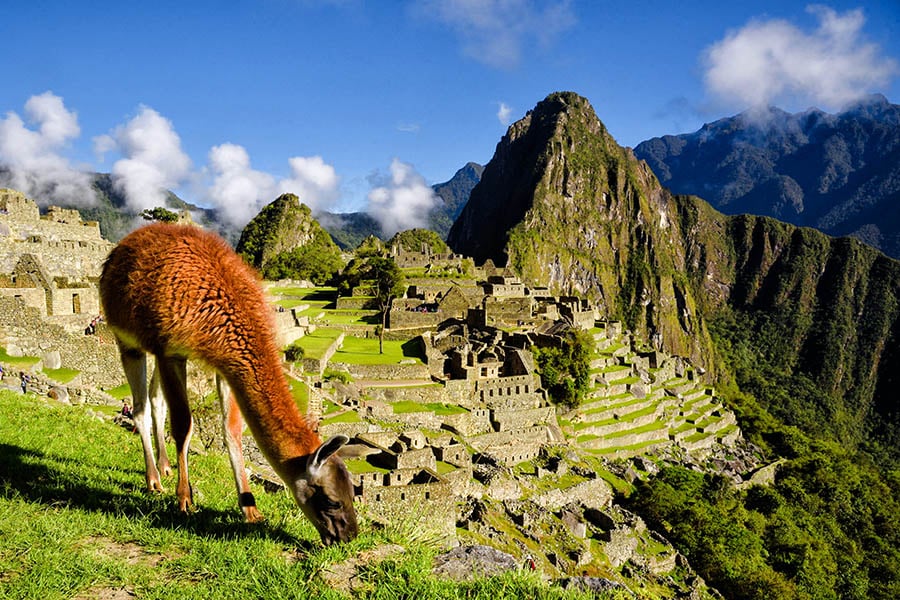Peru's Machu Picchu, the 'Lost City of the Incas' is South America's best-known and most well preserved archaeological site. Built in the 15th, it was abandoned in the following century at the time of the Spanish conquest and remained undiscovered by Europeans until 1911. Situated in the mountains to the north-west of Cusco in Southern Peru, you can reach the ruins on foot by a guided or independent trek with porters and a guide, or by train and a short bus ride.

How to get there
If you're on a multi-stop ticket, you'll probably arrive in Lima from where you can travel overland or take a connecting domestic flight to Cusco. Most tours and treks begin in Cusco or the nearby town of Aguas Calientes.
Best time to visit
The Inca Trail can be hiked at any time of the year (except February when the trail is closed for conservation work), but April - October are the driest months. January and March can be wet, so a good rain jacket and a waterproof tent are required. Peak season is June to September, with the highest visitor numbers between June and August. During peak season, a limited number of permits are issued for the Inca Trail so pre-booking several months in advance is essential. If you can't get an Inca Trail permit, try the following alternative treks as these are less crowded and don't require permits.
Treks to Machu Picchu
Are there different ways to reach Machu Picchu?
Yes. The most popular trail (and most crowded) is the classic Inca Trail. If you're looking to avoid tourists and experience local Quechua life, you might want to consider the Salkantay or Lares treks - both of which take different routes to Machu Picchu. Another interesting option is to combine Machu Picchu with a trek to the ruins at Choquequirao which were only discovered in the jungle about 20 years ago. They're much bigger than Machu Picchu and far less visited as they're really off the beaten track. For an idea of which trek is best for you, check out:
What about entry fees and permits?
In recent years, permits have been introduced to cap the number of hikers on the Inca Trail and protect the route from over-use. The Peruvian government issues 500 permits a day (only issued to registered tour operators) and the majority of these tend to be taken up by porters and support staff. Demand is high for the remaining 200 or so permits, so you will need to book through a tour operator. All our Inca Trail tours include permits.
You'll only need a permit if you trek the Inca Trail - permits are not required for the Lares or Salkantay treks and no permit is required to see Machu Picchu itself, just a local entry fee.
What level of fitness is required to trek and what about insurance?
You won't need any mountaineering experience for any of the Machu Picchu treks. You'll need to be comfortable with hiking for several hours a day, and be acclimatised to the altitude before you begin. The Inca Trail reaches heights of over 4,200m, slightly higher for the Salkantay and Lares treks. You might not think that trekking would be affected by your travel insurance, but many policies will not cover you for treks above 4,500m. Our travel insurance covers you for the classic Inca Trail and can be easily extended to cover you for the two other treks.
How long does it take to trek and are there porters?
The Inca trail trek takes around 4 days, the Lares trek around and the Salkantay trek around 5 days. All of the treks we offer have been chosen because of their ethical and environmental credentials, so you can be sure that the local porters are paid well and treated well, which you should be aware is not always the case on some of the cheaper treks.
Where do you sleep and what about porters?
If you're joining a guided trek, you'll most likely be camping, but porters will usually carry your kit, strike camp and cook meals for you.
Taking the train
If you're short on time or prefer not to hike, don't worry, you can still see Machu Picchu. Trains run from Cusco to and from Aguas Calientes, which is the nearest local village and a good place to stay. From the train station, you can either take a short bus ride to the ruins, or opt to climb the short distance (1.5 hours) to reach them on foot.
Tours we offer to Machu Picchu
We offer a selection of tours covering all the main treks and the train to Machu Picchu. Several of our team have blogged about their own experience of the rewards for trekking the Salkantay and Lares treks - check them out for some inspiration!
You might also be interested in:

Inca Trail alternatives: the Salkantay trek to Machu Picchu

Chris West
Senior Travel Consultant
at Travel Nation

The Lares trek: an alternative Machu Picchu hike

Chris West
Senior Travel Consultant
at Travel Nation


